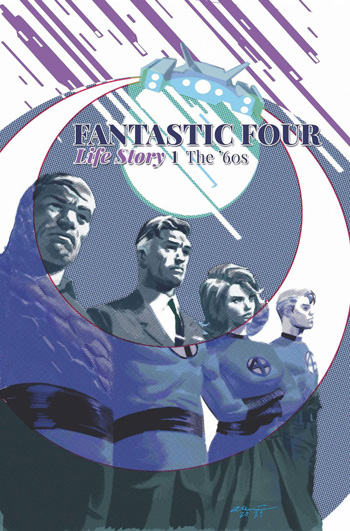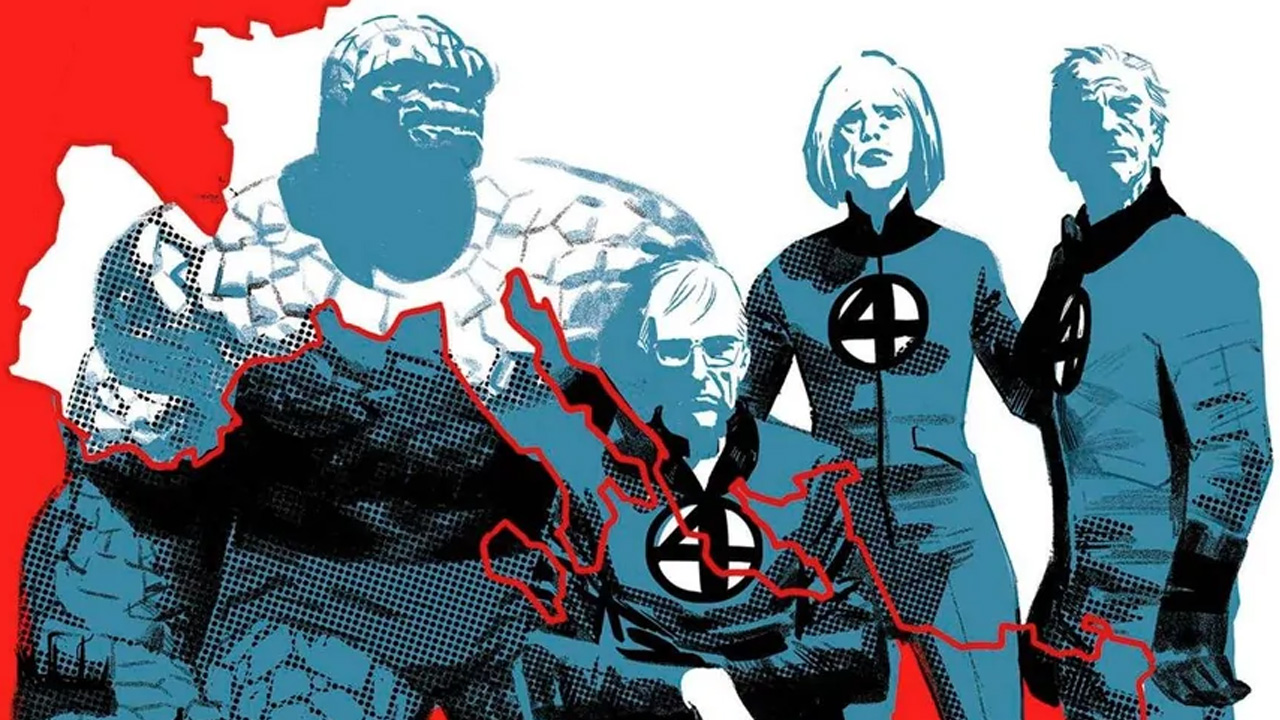
Written by Mark Russel
Art by Sean Izaakse
Published by Marvel Comics
Writer Mark Russell has made a name for himself in comics bringing refreshing twists to classic characters, since his 2019 GLAAD award Leave the stage on the left! The Snagglepuss Chronicles to Superman, The Wonder Twins and other DC staples. Joined by South African artist Sean Izaakse, Russell finds a new lens through which to view Marvel’s first family, The Fantastic Four.
Fantastic Four: Life Story is an “exploration of how the fabulous quartet lived if they aged in real time over the decades”.
Russell’s story spans 60 years, from the team’s historic beginnings in 1961 through the 2010s, with familiar characters and elements of their continuity remixed and recontextualized across this timeline. The collection originally appeared as a six-issue limited series.
Each issue spanned a single decade and featured a single narrative point of view from a central character.
Sean Izaakse brings Russell’s script to life with crisp, expressive characters and tempo control. The artistic support of Francesco Manna, Carlos Magno, Ze Carlos and Angel Unzueta on various issues blends seamlessly into Izaakse’s panels without interrupting the flow for the reader. Rhythm and fluidity are key to effectively weaving the story through decades like a stone skipping across a pond.
The experience feels like watching a Marvel movie: grounding the action in time adds realism, while the hand-picking of familiar sequel elements hooks longtime fans and provides newcomers with the essentials. .
Russell’s primary concern is the most basic element of the Fantastic Four: family.
Fantastic Four: Life Story explores the ties that unite a dysfunctional family through time. Russell anchors this bond in the shared trauma of their origin story: the fateful rocket launch that transformed Reed, Sue, Ben and Johnny into super-powered heroes and, more importantly, found family.
As the years pass and the shared tragedies mount, these bonds are tested time and time again.
Johnny Storm considers when recounting the 1980s arc: “It may have been a tragedy that brought us all together, but over time the tragedy fades and you are left with only the people who helped you survive it.” Almost a decade later, Ben Grimm will echo the theme as he reflects, “it’s the pain you share that makes you family”.
While Russell delivers his themes and nails the plot, the limitations of the story structure do the characters themselves a disservice.
With each chapter limited to a single decade and POV, the effect is like looking through a photo album that only features destination vacations and family reunions. Much of the characters’ lives take place off-panel, as the story’s foreground action emphasizes a larger, decades-spanning plot involving major villains. Even most of the team’s classic adventures and career are considered flashbacks or background action.
The result reduces the main cast to the simplest versions of themselves: the workaholic scientist, the woman who feels invisible, the self-hating, hot-headed monster man.
Another consequence of structural limitation on characters is that many emotional beats feel undeserved.
Sue stands out in this regard as she struggles with her marriage, often feeling what the plot needs her to feel in the moment while the drama that drives her emotions largely occurs off-panel.
Fantastic Four: Life Story is a panoramic look at Marvel’s First Family that paints a powerful portrait of how our bonds carry us through time and pain.
Unfortunately, the rich, textured characters at the heart of the story ring a little hollow in Russell’s narrative, and his emphasis on the trauma and pain that binds them together overshadows another essential element of this classic Marvel franchise: a sense of wonder and optimism.
forcesofgeek.com




Add comment